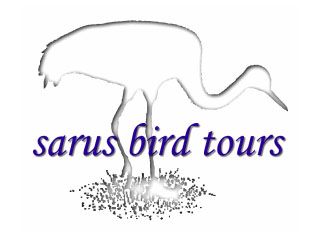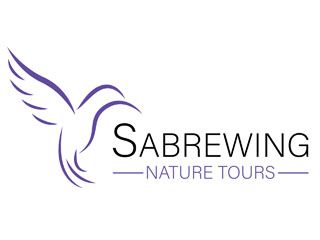Ecotours Worldwide - Stop Dreaming - Start Booking
Nature & Culture of Hungary & Transylvania
If you are totally bored by pyramids of Egypt or the African Wilderness, or had had enough excitement during jungle tours in South America, but still looking for something really new and original mix of Culture and Nature– you are warmly invited to participate in this tour! During our way you will encounter different ethnic cultures, medieval monasteries, churches, ruins, everyday life of craftsmen, nomadic animal husbandry, plus have an opportunity to listen some folk music, taste delicious local dishes and the finest wines.
{slider=Day 1}
Arrive to Budapest. Booking the accommodation and welcome with fine champagnes and Tokaj wines of Hungary. According to King XV. Louis the French Tokaj wine is the “Wine of the Kings, King of the Wines”. Optional half-day-long sightseeing tour depending on the arrival time. Accommodation: Budapest
{/slider}
{slider=Day 2}
- Full day sightseeing in Budapest. There are some who fall in love with the place after the first glimpse, there are others who become devotees of the city only after a long acquaintance, but there is one thing they all agreed with: this is one of the most beautifully situated capital cities in the World. The broad Danube runs through the middle of this metropolis of two million people, separating the hilly Buda side from Pest, which is a perfect plain. The Danube panorama with the Castle District is a World Cultural Heritage site listed by the UNESCO. To know why, you just have to look at it and visit the area full with beautiful medieval buildings and churches. It is just hard to forget the beautifully illuminated bridges and buildings alongside the river. During the full day sightseeing tour you will see almost all of the best sights of the always charming city of Budapest and have time to spend to visit and discover a lot of them:
- 1. Heroes’ Square: a monumental square was built at the Millennium of the Foundation of the Hungarian State in 1896, with equestrian statues of the seven Hungarian Chieftains and a 120 feet high column with the bronze statue of Archangel Gabriel; 2 huge semicircular colonnades with 14 statues of great Hungarian kings and outstanding historical personalities; Museum of Fine Arts with the 2nd largest and finest Spanish Collection in Europe; Exhibition Hall
- 2. City Park: Castle of Vajdahunyad Castle at the shores of a Boating Lake and statue of Washington; Szechenyi Bath is one of the biggest thermal bath complexes in Europe; Transport Museum with one of the oldest collections in Europe; the Municipal Zoo and Botanical Garden; the Grand Circus and the Funfair; finest restaurants
- 3. Andrassy Avenue: one of the greatest avenue of the city, “Champs Elysee of Budapest”
- 4. Opera House: “an architectural jewelry box”
- 5. St. Stephen Basilica: one of the greatest classical catholic churches in Europe with 300 feet high dome
- 6. Freedom Square with Palaces and the last remaining Russian memorial in front of the US Embassy
- 7. Parliament Building: undoubtedly ranked as the most beautiful parliament of Europe and probably of the World. Houses the thousand-year-old, full gold crown jewels of King St. Stephen, founder of the Hungarian state. Hungarians celebrated the 1100th year of the state establishment in 1996
- 8. Margaret Island: a charming and green island on the River Danube, close to the Parliament building
- 9. The old Main Street with a 500-years old untouched Turkish Thermal Spa which still operates
- 10. Chain Bridge: the second chain bridge of Europe, built in 1848
- 11. Tunnel & Funicular
- 12. Castle District: which is listed as a World Heritage Site with the Matthias Church and the Fishermen’s Bastion, beautiful medieval buildings, the Royal Castle with National Gallery and Historical Museums 13. Part of the former Berlin Wall
- 14. Gellert Hill with the Freedom Statue, a fortress called Citadel and an unforgettable view of the city
- 15. Largest Synagogue in the Continent
- 16. National Museum After dusk we also show you the elegance of the city by night from either the top of the Gellert-Hill or from the Castle Hill at the Fishermen’s Bastion. You will recognize all the illuminated major parts and buildings of Budapest we have seen during the day: If you still have energy you can have a stroll through the fashionable Vaci Street, a well known tourist and shopping center of the most elegant capital of Eastern Europe
{/slider}
{slider=Day 3-4}
The River Danube takes a sharp turn to the south and creates a wonderful valley just north of Budapest. The area is called Danube Bend and bordered to the north by the Börzsöny Mountains and to the south by the Visegrád Mountains. The whole region is very popular and offers various programs where we spend two days. On one day we visit the “Pearls of the Danube Bend“: Esztergom, Visegrád and Szentendre are the most unique cities in the picturesque landscape of the river Danube surrounded by hills. Esztergom used to be the capitol of Hungary for three centuries and it is still the most important catholic center in the country. The sight of the monumental classicist cathedral and the old town emerging from the surrounding hills captures the imagination. The medieval royal castle used to be the palace of the Archbishop. Birds of prey from the nearby ranges are often seen above the former Royal Castle of Visegrad. It’s hard to forget the breathtaking view of the Danube Valley among the hills from the Salamon Tower. Szentendre is a lively center of art and folklore. Our first stop is at Szentendre with its characteristic culture, center of art and folklore. This is the Danube Bend's most visited tourist center, a small town sited on the bank of the Danube with winding streets, towers of Catholic, Calvinist and Orthodox churches, colorful houses, narrow alleyways and a Mediterranean touch only to be found here. Dozens of museums, famed restaurants, cafés, small shops and handicrafts stalls are everywhere. Leaving Szentendre we drive alongside the Outdoor Museum of Village Architecture right at the edge of the Pilis Woods. After that we travel through the Pilis and the Visegrád Mountains; songbirds, woodpeckers, raptors are regular sights. After lunch our next stop will be at Esztergom, "the religious capital of Hungary" with a monumental classicist cathedral and a unique chapel, palace of the Archbishop and a medieval royal castle. King St. Stephen, founder of the state was born here and in the 11th century it was the country's first royal seat and religious center. The symbol of the city is the Cathedral or Basilica on the top of the Castle Hill. The biggest church in Hungary boasts with one of the largest canvas-based altar paintings in the world. The red marble Bakocz Chapel is a gem of Hungarian Renaissance construction. It is actually 300 years older than other parts of the church. The Treasury of the Cathedral is extremely rich in works of goldsmiths, special textiles, drinking horns, Gothic chasubles, chalices and Calvary of King Matthias. In the former Royal Palace we can find the Castle Museum with the "St. Stephen's Hall", a royal chapel with frescoes dating back to the 11th century. The Christian Museum holds Hungary's most valuable provincial collection. Among the medieval Hungarian art treasures is the Calvary Altar from the 15th century, but there are plenty of extraordinary foreign fine art masterpieces as well. Our last program will be a visit of the former royal castle at Visegrad, the so called "Cloud-capped Castle". "From Visegrád, from an earthly paradise"-wrote an ambassador of the Pope, guest of King Matthias (1458-1490), and a person well used to glitter and pomp. Completed in 1330, the new royal palace of Visegrád became the capital in the 14th century. At that time it was the largest building complex in medieval Hungary. The richly decorated red marble columns and courtyards with superbly carved fountains in the Palace of the Renaissance King Matthias gave such an air of magnificence that it was considered one of the 15th century's most splendid royal residences. Today we can only see traces of the past glory in the King Matthias Museum. As we enjoy the breathtaking view of the Danube Bend birds of prey and Ravens fly above us. Finally we return back to Budapest. On another day we start with the discovery of Börzsöny Hills and Ipoly Valley, both belong to our newest national park, the Danube-Ipoly NP. This area is renowned for its castles and for its hundreds of springs. The flora and fauna of the hills is most diverse: there are several glacial plant relicts among the 70 protected plant species which live here and more then 90 species of birds breed regularly. The Ipoly Valley is one of the most intact areas of the National Park with wet meadows, alder wood, special flowers, almost all Hungarian amphibian species and innumerable species of birds. The rich flora and fauna, ethnography and archeological finds are displayed in Szob in the Börzsöny Museum. Nagybörzsöny is one of the most picturesque villages in the area with 13th and 15th century churches and a water mill. Another nice village is Zebegény where the Roman Catholic Church is a precious reminder of the Gothic style, while the Parish Church, designed by Karoly Kos, is an outstanding example of the Hungarian Art Nouveau style. We have some nature walks in diverse habitats of different protected species and travel by a narrow-gauge train through the Börzsöny Hills. We also visit a tiny island of the River Danube looking for wildfowl and waders. Finally we travel back to Budapest , but you can decide what to use for transportation: our bus or a boat! Please note, that the boat tour is an optional program, you have order it in advance!
{/slider}
{slider=Day 5}
After an early weak up we hit the road again traveling to East towards the Romanian border. After about a 2 and a half hour long drive we will arrive to the Great Bustard Rehabilitation Center at Dévavanya. Here the employees of the Koros-Maros National Park will show you how they try to save Europe’s largest birds starting with the incubation of the eggs and finishing with the release of the adult birds into the wild. Later we arrive to the world-famous Hortobágy Puszta, another part of the Great Hungarian Plain, a piece of the Asian Steppe in the heart of Europe with hazy distant horizons. This extensive plain has very diverse habitats and unique species: seasonal salt marshes with salt-tolerant species, aquatic sedge and rush communities, loess-deserts, grasslands and special woods. The Hortobágy National Park preserves some of the most unique curiosities and treasures in the middle of Europe. Mirages of trees, Puszta-wells, church spires, even entire villages may be seen in the shimmering hot air of the Pusta. Tens of thousands of migrating cranes, Wild geese, Mallards, Spoonbills, rarely seen Black storks and White storks are parts of the scene. No wonder this area is one of our most famous World Heritage Sites. Near the agricultural town of Karcag, Barna Windmill and Zador Bridge are the highlights. Then we continue our way towards the River Tisza and stop at Tiszafüred to admire Lake Tisza with Herons, Egrets, Cormorants and other waders & waterfowl. After lunch we will drive to the famous 300 years old 9-arch-bridge of Hortobagy. If you desire you can buy some local traditional items at the nearby folklore fair. We visit the National Park’s Exhibition and learn about the vegetation and fauna of an alkali plain including traditional domesticated animals such as the funny-looking Mangalica Pig, the enormous Hungarian Grey Cattle, Racka-, Cigaja-Sheep, famous Hungarian stud, different special breeds of shepherd-dogs: “Puli”,“Komondor”,”Kuvasz”. We say good bye to Hortobagy by having a fine dinner, a “Pusta-party” where we can taste special local dishes and wines. The evening will find us at the “Calvinist’s Rome”, city of Debrecen. Accommodation: Debrecen
{/slider}
{slider=Day 6}
We travel to East, towards Romania from Debrecen early morning. Just after crossing the border pretty soon we arrive to Nagyvarad, a city full of historical sights such as the monument of Saint Leslie, sacred medieval king of the Hungarians or the catholic cathedral. After leaving Nagyvárad we reach the first hills what we cross at a special place, called King-Pass. Here we enter a huge area, which is called Transylvania, since this is the westernmost border of it. The ridges of the Carpathian Mts. provide the Eastern and Southern borders of the area a few hundreds miles away. Transylvania is the historical homeland of the Seclers, ethnic Hungarians in Romania. We stop at one of the nice ethnic villages: Kalotaszentkirály and/or Körösfő where their original folklore and culture is still can be seen. The region is also famous for its very special local dishes and hospitality of the local people. Our next stop, Kolozsvár, the former “Capital of Transylvania” is full with interesting sights: a medieval house where one of our most famous kings, King Matthias was born about 550 years ago, his equestrian statue, St. Michael church, statue of St. George and a bastion. Accommodation: Torda/Torockó
{/slider}
{slider=Day 7}
Not far from Kolozsvár we visit the nearby Torda Gorge among limestone hills. According to an 800-year-old legend this monumental canyon was cut by the sword of St. Leslie, warrior king of the Hungarians thus making his escape from the Tatar hordes. We spend a half day at the breathtaking nature reserve wandering among the 1000 feet high walls of the 2-mile-long gorge and eat our packed lunch in the area. Later you will have a chance to try a buffalo-, or donkey-drawn carriage and taste a roasted sheep while enjoying the traditional folk-songs in the Torockó Region. Accommodation: Torda/Torockó
{/slider}
{slider=Day 8}
We start our day with a tour from the World Heritage Village of Torockó in the vicinity of the massive Secler Rock towering above us up to 3700 feet, most attractive peak of the Bihar Mts. Just to ensure our warming up we taste a local black cranberry liqueur, called “kukujsza” and enjoy the tranquil scenery: unique landscape dotted with tiny farms of the local Moc people whose live hardly changed during the last centuries. They carry out the same lifestyle they had during the Middle Ages: man work and travel by buffaloes and donkeys while women wash the clothes in the streams. It is like a time-traveling which will be hard to forget! Leaving the Moc Land we enjoy the spectacular view of the salt mines of the region and approach another important center of Transylvania, Marosvásárhely. The city boasts with a Protestant fortress-church, a Palace of Culture with a mirror chamber, an old library and a medieval castle. After sightseeing we travel to Szováta, bath and spa center of the region. It is famous for its unique Lake Bear, member of the only thermal salt lake system in Europe in the middle of a pine woods. Accommodation: Szováta
{/slider}
{slider=Day 9}
This day we make a circle tour visiting a few traditional villages and medieval towns at the foot of the Carpathian Mountain ranges. White salt cliffs decorate the surface at the village of Parajd which was one the first commercial salt mines opened more than 2000 years ago and belonged to the Roman Empire. It still operates while there is an interesting underground museum with salt chapel, sculptures and a salt playground for the kids. The next village, Korond is famous for its special local pottery what you can admire at the always open local market. Farkaslaka and Szejkefürdő are tiny villages with national historical monuments. Hungarians go on a pilgrimage to the shrines of the two outstanding Secler personalities buried here from all over the World. Later we arrive to Segesvár, “Capital of Saxon Land in Transylvania”, an ancient town full with history and still having some German minorities. "Saxon Nurenberg" is the nickname of the city which is still decorated by the Towers of the Guild. These towers, the medieval city walls and gates are all part of the defending system of "the pearl of Transylvania". We go for a stroll in the historical downtown full with hundreds of old buildings, temples and ruins. The symbol of the city is the 210 feet high clock tower at the decorative main gate which also serves as a perfect lookout point. The 700 years old fortress is now a museum exhibiting old documents, weapons, coins and other treasures. The same old former Dominican monastery holds an oriental carpet collection. Strange stone sculptures can be seen on the gothic cathedral atop the Castle Hill. There is a remarkable 500-year-old tabernacle and a multicolored altar of St. Martin inside. The house where the infamous count Vlad Tepes, better known as Dracula was born is also here. As we return to Szováta we travel through Erdőszentgyörgy, birthplace of one of the ancestors of the British Royal family. Accommodation: Szováta
{/slider}
{slider=Day 10}
We have a full day mountainous program to discover the Eastern Carpathian Mts. Our first stop will be at Bucsin-Plateau, one of the most scenic place of Transylvania. After a short hike we go across Gyergyószárhegy village, pass the castle of Count Lazar's and drive through the historical main street of Gyergyószentmiklós town. We reach the most monumental and narrow gorge of the East Carpathian range, Békás-Gorge, with several hundred feet high walls and Killer Lake with its unique surroundings of its type. No wonder the area is referred as the "Switzerland of Transylvania". In 1837 a small stream was abruptly blocked by a landslide in this forested valley and the basin was filled with water. According to a legend a complete herd of ships and the shepherd was buried and killed instantly by the landslide. The lake is full with the trunks of the dead trees still standing preserved in the water by the high concentration of iron and other minerals in it. This is quite a strange scene, hardly seen anywhere else. The Thunder Rock emerging above the lake gives an additional gorgeous view to this enigmatic place. The whole region is the homeland of another ethnic Hungarian minority, the Chango people. Since they lived separately from both Seclers and Hungarians for a long time they speak a different Hungarian dialect. They still use quite a lot of very special traditions, dances, folk music and costumes. Finally we offer a short, optional hike to the Little-Cohard Peak near the lake. Those who walk up to the top can enjoy an unforgettable view of the above mentioned area with pristine forests all around us. With luck we might find some Edelweiss as well, close to the peak. Accommodation: Marosfő
{/slider}
{slider=Day 11}
We start the day with travelling up to the Mt. Hargita, sacred peak of the Seclers via the wonderful valley of Ivo stream. After an hour long hike to the peak we can enjoy the scenic view of the typical Transylvanian woodland landscape. We visit a family of mountain sheep shepherds, where you can taste the delicious curd cheese, locally called "orda" and other cheese specialties. It is also a rare event to witness the hand-milking process which has not changed for several hundreds of years. Our next stop is at Székelyudvarhely at the foot of Mt. Hargita. This is the most Hungarian city in Transylvania, since 98% of the population is Hungarian, although it is more than 200 miles to the East from the border. The 700-year-old city was the Mecca of the Transylvanian craftsmanship and guilds for a long time. Not far from the main square there is an old, famous college and a lovely local museum with an interesting collection of traditional objects used in the region. After leaving the town we drive through a tiny village, Máréfalva rich in amazingly decorative painted wooden gates, called “Secler Gates”. Later we cross part of the Carpathian Mts. again and visit the Csíksomlyó church and Salvator chapel, a well-known site of pilgrimage. According to the Chango legend, each time when the statue of Maria shreds tears a miracle happens. We walk up to admire the statue via the Calvary. At Csíkszereda town we stop for the medieval fortified Miko Castle, the local Museum and the Lyceum, used to be one of the spiritual centers during the Middle Ages. Finally we arrive to Tusnadfurdo, an internationally known popular resort with healing spas. The old spa at the shore of Lake Csukás has been used for more than 400 years. The surrounding area is excellent for hiking and nature walks as well. You can choose from different attractive destinations such as Solymos Rock, Vártető Peak or Tusnád-Pass, which is one of the most impressive gorges of Transylvania. Accommodation: Tusnádfürdő
{/slider}
{slider=Day 12}
Just a few miles away from our accommodation we admire the legendary St. Ann Lake, the only crater lake of Europe. Standing at the shores it is easy to understand why most of the travelers refer to it as "Pearl of the Carpathian". It is a paradise for botanists, zoologists and geologists alike, rich in natural rarities and scientific valuables. The nearby Kukojszas Swamp used to be the twin lake of St. Ann Lake, now one of the greatest highland moors of Europe with unique flower and moss species. It is another remarkable scene! Another reminder of the once very strong volcanic activity in the region is the “Stinking Cave” of Torja. A short stop is enough to smell the sulfuric gases caused by the ongoing post-volcanic processes. The cave is used for healing rheumatic diseases. To enjoy a different atmosphere we stop at Kézdivásárhely and visit a doll museum where hundreds of unique handmade dolls can be seen. There is another special exhibition of the medieval guilds, dating back to 1572. Traditional costumes and other items of the everyday life are also deserve your attention. It is also worth to look around at the old marketplace surrounded by nice 2-300-year-old buildings. As we travel further South we cross the traditional village of Csernát and arrive to the Rétyi-Nyír Nature Protection Area, famous for its birch woods and swampy lakes where we have a nice nature walk. Finally we return back to Tusnádfürdő through the 700-year-old Sepsiszentgyörgy town. Accommodation: Tusnádfürdő
{/slider}
{slider=Day 13}
During our way towards the city of Brassó we enter the “Saxon Land” again. We stop at the most wonderful, greatest fortress temple of the region at Prázsmár, which was built during the 13th century by Germans. Our next stop is Brassó, nicknamed as “Salzburg of Romania” because of its gorgeous geographical location at the foot of the Tampa Mountain. It is just impossible to visit all the remarkable sights in the downtown: the gothic Black Church with an impressive 200 feet high tower and a huge organ, the Town Hall, the medieval bastions, towers, churches and gates of the city wall. Just to the South of the city there is a popular scenic mountain center of Bucsecs Mountains, called Poijana. This picturesque area is a busy sky resort during winter and a favorite hiking and walking recreational destination during summer. There are extensive forests of beech and spruce, plus some nice parks as well. A tour on alpine meadows among towering rocks gives you an impression of the attractive landscape. The nearby peak of Mt. Keresztély rises up to 6000 feet. Accommodation: Brassó
{/slider}
{slider=Day 14}
Half of the day we spend in the tiny Sinaia town in the Bucses Mts.; it is often referred as "The Pearl of the Carpathians”. It has all the necessary facilities for a very pleasant holiday. The settlement in the mountainous valley has been turned into an all-year non-stop tourist resort thanks to the specific climate characterized by a lot of sunshine and moderate temperature during the whole year. The specially shaped multicolor houses look like as part of a decoration of a fairy tale. Monastery of Sinaia was founded in 1695 and now offers a nice collection to visit, containing religious objects, icons, rare books, pottery and porcelain ware dating back to 16th century. We also visit the Peles Castle, a former royal-residence in the middle of a splendid park. The building itself is one of the most precious monuments in Romania with different architectural styles and part of the 160 rooms operate as a museum. If you are prepared for a blood-chilling trip we drive towards Törcsvár, homeland of the bloody figure of “Count Dracula”. The "Dracula Castle" was built in 1378 atop a cliff and had a strategic role in protecting the pass and served as a custom checkpoint as well. According to the legend Vlad Tepes or better known lived here. Once you have visited the towers of the castle, its narrow stone stairways, the authentically furnished rooms of the Lord it would not be hard to imagine why it inspired Bram Stocker to write a Victorian novel about “Count Dracula” and his strange habits. During our scenic way towards our accommodation we cross Barcarozsnyó town, famous for its ancient peasant-fortress. The surrounding area is dominated by the scenic view of the 8000 feet high Omul Peak with typical alpine vegetation all around. Accommodation: Brassó
{/slider}
{slider=Day 15}
Hopefully you had a nice and peaceful last night in Romania without a nightmare or a visit of Count Dracula and ready for a hundred-mile-long drive to the Otopeni Airport, Bucharest.
{/slider}

Contact
Phone: Call May-October; Text all year
+36 30-645-9318 or +36 30-211-0006
Call Nov-April: +506 84961012 or 84961417
e-mails:
ecotoursgabororban @ gmail.com
toucanbirdingecolodge @ gmail.com
Our mission
Our first priority is to save habitats & species.
Secondly we would like to share our knowledge of wildlife and encourage you to participate directly or indirectly in protecting nature.
We are also working continuously on our carbon balance with developing our 23 hectares of wildlife reserve.













